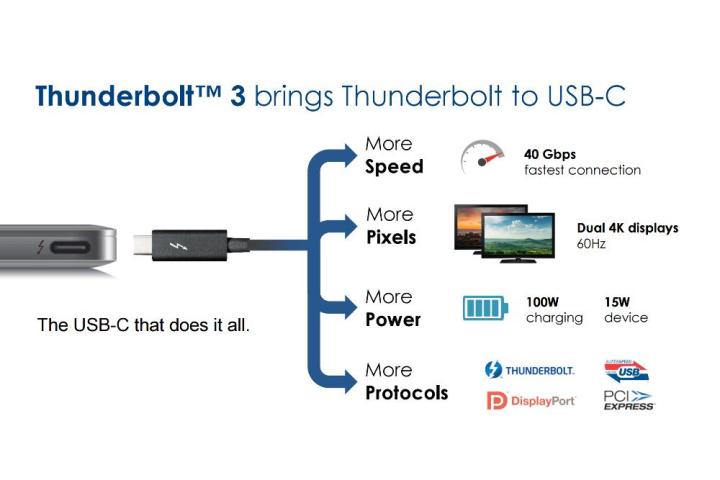
Thunderbolt’s latest iteration is nothing to laugh at even without USB Type-C support. It offers up to 40 gigabytes of data transfer per second, can handle two 4K displays at once (with a daisy-change configuration) and, like USB Type-C, can deal with up to 100 watts of power.
With the addition of USB support in Thunderbolt 3, Intel is highlighting its cross-standard compatibility. This latest iteration of Thunderbolt supports USB, DisplayPort, and PCI Express, all in one wire.
Related: The Hub+ wants to fix your MacBook USB Type-C connectivity woes
And, due to Thunderbolt’s daisy-chain support, this provides some very interesting opportunities for docking. A single Thunderbolt 3 cable can connect a laptop to a dock, and in the process enable the connection of additional monitors, USB devices, Ethernet cables, and much more. Companies used to build proprietary dock connections to enable this kind of feature set.
To be clear, Intel is not just talking about physical compatibility. Thunderbolt 3 integrates a USB 3.1 controller. What that means is, from a user perspective, Thunderbolt 3 and USB Type-C won’t seem much different. The former will be quicker than the other, but anything that says Thunderbolt 3 on the label should work with any USB Type-C port, largely negating the standard’s compatibility issues.
Intel is obviously trying to position Thunderbolt 3 as the one connection to rule them all. Bundling USB Type-C means there’s no major PC standard it does not support. Since this compatibility does not extend to the older but very common USB 3.0 connection, it won’t have an immediate impact. But it will become significant as USB Type C / USB 3.1 replaces the preceding standard over the next few years.



